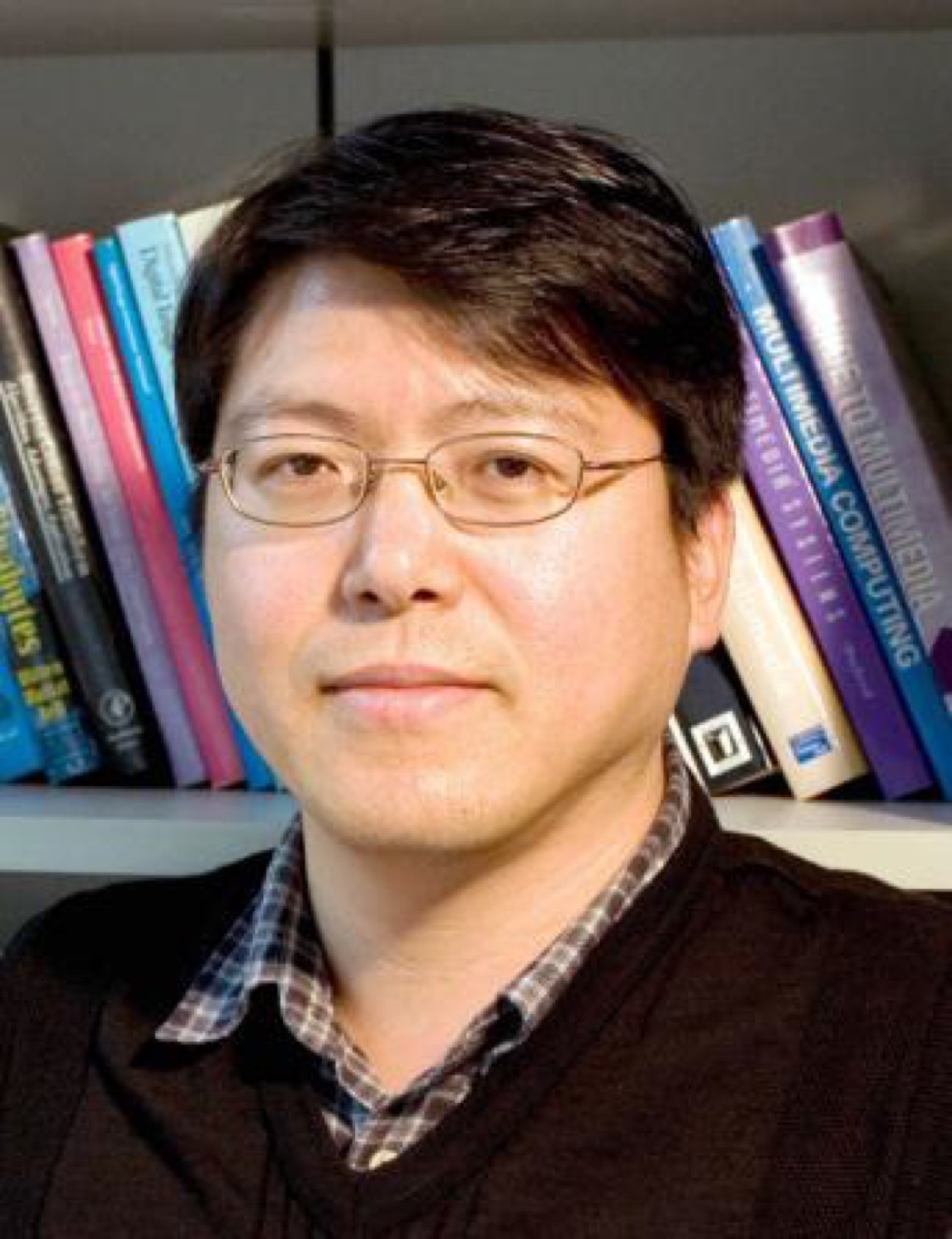KAIST Professor Woontack Woo and his research team from the Graduate School of Culture Technology (GSCT) demonstrated their new optical augmented reality platform at the 2015 Smart Cloud Show in Seoul last month. The Smart Cloud Show is an Internet Technology (IT) trend convention, organized by Chosun Biz, that displays recent trends in IT and provides a platform for IT firms to promote their products and strategy.

Professor Woo’s research team GSCT’s Augmented Human Research Center introduced a smart-glass augmented reality platform that supports avatar-based and hand-controlled remote collaboration between users.
Current remote collaboration platforms have low adoption rates due to their two-dimensional user interface and complicated virtual reality (VR) system. This is where Professor Woo’s new technology comes into the equation. A camera attached to the smartglass recognizes and tracks the user’s hand motion, enabling the user to interact with other remotely controlled avatars. The smartglass simulates close-quarter interaction with other avatars, allowing for a natural and intuitive experience.
This stable, real-time motion tracking technique not only enables users to hand-control and manipulate augmented content as they would in real-life, but also provides accurate hand-motion detection even during self-occlusion, a common problem in virtual environments that occurs when part of the user’s hand obstructs the camera’s view of other parts of the hand. Furthermore, by synchronizing the hand-motions of other remote users with their respective avatars, users could work with others on the same augmented content in the same virtual space.
Professor Woo’s research could potentially increase individual productivity and reduce the social overhead associated with transportation by diminishing the need for physical travel in the workspace. Professor Woo said, “This technology has made it possible for us to lower [unnecessary] travel costs and build highly immersive collaboration environments. We look forward to it being utilized and applied to in various fields such as healthcare, education, entertainment, and tourism.”

